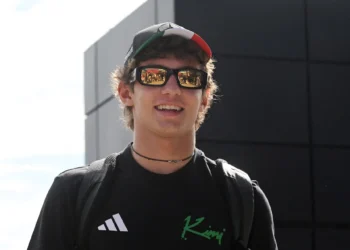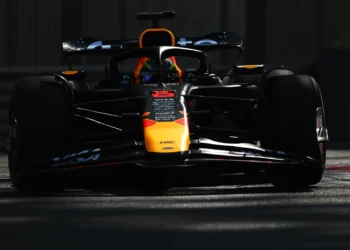In addition to their technical expertise and innovative designs, the essence of sport lies in its human aspect, particularly the rivalries that have shaped generations of racing.
These competitions not only pushed the drivers to their limits, but also captivated global audiences, transforming Formula 1 into more than just a motorsport.
At its core, F1 is a testament to human determination, where drivers are pushed to their physical and mental limits. The rivalries that emerge on the track go beyond mere competition; they are battles of determination, skill, and willpower. The same can be said for online gaming, where passion runs deep and adrenaline flows freely. To experience the thrill of victory, Tiger casino slots offer the best choice.
No discussion of rivalries in F1 would be complete without mentioning the legendary battles between Ayrton Senna and Alain Prost in the late 1980s and early 1990s. These battles were characterized by intense competition and contrasting styles.
Senna, famous for his aggressive and instinctive driving, faced off against Prost, the calculating strategist, resulting in a rivalry that was both thrilling and controversial. Their infamous collisions at the Japanese GP in 1989 and 1990 are etched in F1 history.
Lewis Hamilton and Nico Rosberg shared a complex relationship that evolved from childhood friends to fierce rivals. As teammates at Mercedes, their quest for supremacy became a defining narrative of the mid-2010s.
The 2016 season witnessed the peak of their rivalry, with both drivers experiencing tense moments on and off the track, culminating in Rosberg’s surprising retirement after clinching his only World Championship.
Michael Schumacher and Mika Hakkinen engaged in a battle for F1 dominance at the turn of the millennium, offering a rivalry characterized by mutual respect and fierce competition.
Their clashes were marked by fair but intense races, as both drivers pushed each other to the limit. Schumacher’s relentless pursuit of victory and Hakkinen’s calm determination provided some of the most unforgettable moments in F1 history.
The rivalry between Sebastian Vettel and Mark Webber at Red Bull Racing showcased the fierce competition within a team.
Despite sharing the same equipment, the two had a tense relationship, exemplified by the “Multi 21” incident at the 2013 Malaysian Grand Prix, when Vettel ignored team orders to overtake Webber, resulting in public tensions.
The rivalry between Fernando Alonso and Sebastian Vettel gained prominence in the early 2010s as they fought for the World Championships in 2010 and 2012.
This rivalry personified a clash of eras and styles, with Alonso’s experience and tenacity against Vettel’s youthful energy and precision. Their often intense and strategic encounters highlighted the competitive spirit and pursuit of success that define Formula 1 champions.
The ongoing competition between Max Verstappen and Charles Leclerc symbolizes the next generation of Formula 1 talents vying for supremacy. After competing against each other since their early days in karting, their transition to Formula 1 has revived this rivalry on a global scale.
Their battles on the track, characterized by aggressive side-by-side racing and strategic duels, represent a shift towards a younger and more dynamic era in Formula 1, promising exciting contests in the years to come.
These rivalries not only define the careers of exceptional Formula 1 drivers involved, but also shape the legacy of the sport. They bring out the best in competitors, driving them to new heights of achievement. Moreover, they captivate fans, creating narratives that make the sport more relatable and emotionally engaging.
Rivalries weave captivating stories that go beyond the world of motorsport, deeply incorporating Formula 1 into cultural narratives worldwide.
The greatest rivalries in Formula 1 serve as a testament to the sport’s ability to captivate and inspire. Through these intense competitions, drivers are remembered not only for their victories, but also for the indomitable spirit they display on the track.
As Formula 1 continues to evolve, new rivalries will emerge, maintaining the tradition of excellence and competition that is at the heart of the sport.
© 2024
Formula 1 driver Max Verstappen secured an impressive victory at the Monaco Grand Prix on Sunday. Verstappen, from the Red Bull Racing team, led the race from start to finish, surpassing his rivals and securing the top spot on the podium. With this win, Verstappen extends his lead in the world championship for drivers.
The race in Monaco was thrilling from the start. Verstappen started in pole position and maintained his position in the first corner, avoiding any incidents. He showed skill and control as he drove his car through the narrow and challenging streets of Monaco, maintaining a comfortable lead over his competitors.
Mercedes drivers Lewis Hamilton and Valtteri Bottas fought to catch up to Verstappen, but could not surpass his speed and skill. Hamilton, currently in second place in the championship, finished the race in second, followed by Bottas in third.
Verstappen, with just 25 years old, has stood out this season. He has already achieved several victories and demonstrates a consistent performance in all races. His overtaking ability and car control make him one of the most promising drivers in Formula 1 currently.
With this victory in Monaco, Verstappen extended his lead in the world drivers‘ championship. Now, he has a significant advantage over Hamilton and the other competitors. With the performance he has been showing, Verstappen is getting closer to winning his first world title in Formula 1.
The next race of the championship will be held at the Istanbul International Circuit in Turkey. Verstappen will certainly be determined to maintain his winning streak and further consolidate his lead in the championship. Formula 1 fans are eager to see what the young Dutch driver will be able to do in the upcoming races.









